Lasers are a powerful source of light. It has remarkable features and is capable of covering long distances with little difference. Based on the unique properties of laser beams, laser cosmetology emerged. The direction is distinguished by the ability to penetrate hard-to-reach areas of the body, control the circulatory process, choose the most appropriate method of exposure, adjust the parameters of the device to the characteristics of the patient's body. The ability to get beautiful skin without cuts and punctures attracts many people. Therefore, rejuvenation and other services involving high -energy beam manipulation are preferred over plastic surgery and "beauty injections".
Types of lasers
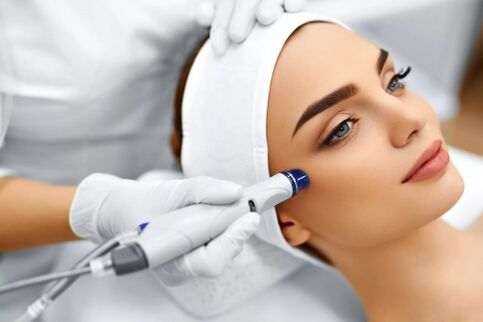
To achieve a healing and corrective effect, various types of cosmetology lasers are used - it is advisable to immediately ask a cosmetologist the type of installation they use in the office. All types are united by the absence of consequences in the form of scars, scars, which often occur after the intervention of aesthetic surgeons.
formthis type of laser:
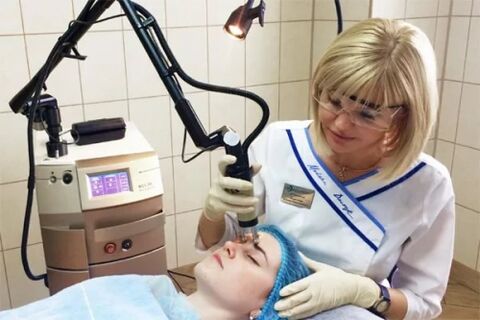
- Erbium. . . Penetrates shallowly, eliminating defects with maximum accuracy. The heat energy generated is quickly lost so that nearby tissues are not damaged. Short and fast pulses, combined with the wavelength and density of the emitted wave energy, need to be balanced. Only after that side effects from the procedure are excluded. With the help of an erbium laser, striae are qualitatively removed, tightening is performed, and exfoliation is performed.
- Carbon dioxide. . . It has been used in cosmetology and medicine for almost 40 years. Indications for re-painting with this type of beam are aging spots on the face and body, tattoo removal, low-quality permanent makeup, removal of scars after surgery, past injuries, attempts to get rid of acne on its own.
Carbon dioxide lasers (the second name of the unit) are used to perform dermabrasion - a rather serious cosmetic procedure. In case of improper operation of the device, rash selection settings, it leads to irreversible consequences. This device allows you to direct a dosed high -energy beam, regulate and then control the depth of penetration. In one session, the beautician processes a large area of skin. A direct indication for the use of carbon dioxide lasers is the need to remove papillomas, colloidal scars, and acne scars. The patient will be able to normalize the skin condition, if previously problematic. The beautician will remove the enlarged pores, making the surface of the epithelium even. The advantages of the procedure are the low number of relapses and side effects, short recovery period. Disadvantages - redness lasts a long time in the treatment area (up to 2 months). This phenomenon is associated with the expansion of capillaries - small blood vessels experience an increase in pressure during the procedure. Allowing the wrong dose of laser beam leads to scarring, weakness, or vice versa - increased pigmentation.
- Ruby. . . This beam is used for epilation. Features - the procedure can be performed only on light skin. By acting on tanned or darkened skin naturally, you can trigger problems with pigmentation, with more serious loads, burning will occur.
- Alexandrite. . . Produces a long -distance beam that distinguishes it from its counterpart. Processing requires constant external cooling of the tissue. It is used for exposure to fair skin, provided there is no sunburn. Hair removal for a blonde is ineffective and even dangerous.
- Diode. . . This type of laser is used for one of the most effective types of hair removal. Beam penetration depth is not more than 4 mm. The advantage of the procedure is the absence of damage to the natural pigmentation of the body.
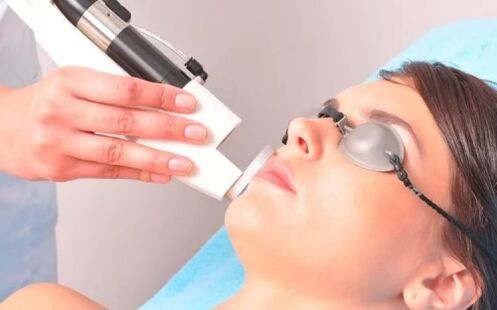
Also begneodymium laser. . . The individual nature of the energy flow generated makes it possible to use it for a variety of purposes - from removing low -quality permanent makeup to epilation. In addition to affecting hair follicles and the skin’s natural pigments, radiation affects small blood vessels. They are frozen. This type of installation is only equipped in specialized clinics; in standard beauty salons, their presence is a relatively rare occurrence.
Indications for laser treatment
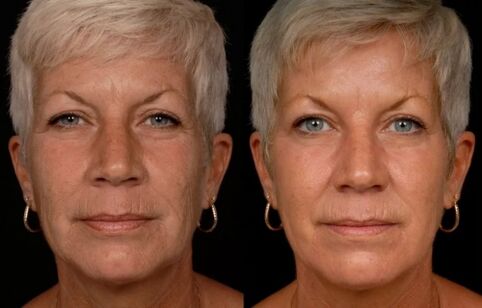
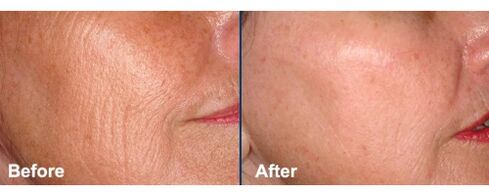
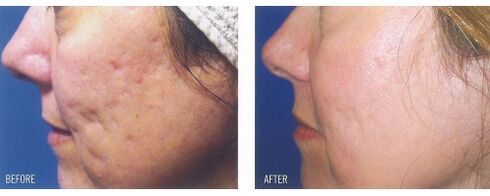
The widespread use of lasers in cosmetology is explained by a versatile directional spectrum. It is useful to contact a beautician and sign up for a procedure for people with such skin problems:
- Acne, as a result after it is scarring, blue spots.
- Wrinkles are typically mimicking, obviously age -related.
- Scars, regardless of their origin, limit duration.
- Sagging facial contours.
- Skin relaxation, reduced tone.
- Bags under the eyes.
- Hyperpigmentation of the face, body.
- The presence of dark circles under the eyes.
- Low quality tattoos.
- The pores enlarge.
After treatment, the skin becomes velvety, smooth, soft and taut. Defects disappear, as the face and body acquire an even texture. The duration of a procedure depends on the type of laser treatment, the patient’s expectations, the amount of work to be done and the degree of neglect of the existing defect. Sometimes the duration of a session is determined by the age of the skin problem.
Choice of beauticians and contraindications to the procedure
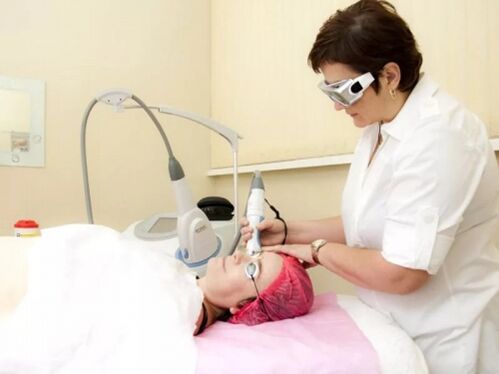
Laser correction has been used in cosmetology for a long time. And since the introduction of the innovation, experts have established almost all the features of the body, with a better presence to push the procedure. The limitation is explained by the fact that exposure to high energy radiation worsens the course of pathological processes present in the body on an ongoing basis.
The list of contraindications is replenished every month, because there is not a single rejuvenation, corrective effect worth a person's life - he is a priority. The fact that you have chosen the right beautician (and not a salon, medical center) is evidenced by his desire to gather as much information as possible about your health. A competent physician always determines all chronic diseases, and also takes into account the diseases suffered by the patient in childhood. Find out about all medications taken regularly or periodically. What matters is the tendency to develop allergies, the lifestyle the patient goes through, whether or not there is already experience of laser correction, to what it has evoked.
Absolutely all factors matter, and if a beautician just indifferently registers for a visit to the procedure, he can not be called competent.
After identifying at least one contraindication, the doctor will suggest alternative ways to get the desired effect or recommend completely abandoning the idea of using lasers.
A competent physician will not perform such a procedure after knowing that the patient has:
- Low blood clotting (hemophilia, including family history), predisposition to thrombosis.
- Autoimmune diseases - rheumatoid arthritis, systemic lupus erythematosus.
- Unknown inflammatory elements were originally found on the skin of the face and body.
- Extensive inflammatory processes and skin lesions - psoriasis, dermatosis, herpes infections.
- Precancerous conditions.
- There are many moles on the body (more than 100).
- Sunburn naturally (on the beach, for example) leads to the formation of new moles. They are somewhat darker than the existing nevi or no different from its shade.
- Oncological tumors that are benign and malignant (localization is not important).
- Diabetes mellitus, regardless of its type.
- Hypertension.
- Chronic renal failure.
- Early postoperative period (weakened immunity can cause unpredictable skin reactions to recur).
- Severe ischemia.
- Phlebeurysm.
- Psychoemotional instability, the presence of severe mental illness.
- The need to take sulfonamides, antibiotics, hormonal agents, fluoroquinolones, as well as drugs that enhance the effects of ultraviolet radiation.
- Tendency to activate colloidal scars.
- Family history of vitiligo.
- Pregnancy, lactation period.
The presence of these factors is incompatible with the use of lasers, and all these conditions are united by a common concept - absolute contraindications. If beauticians know about their presence, it is impossible to implement its effect with high energy. This procedure can speed up the oncological process, transfer the chronic disease to a worsening phase, and turn the mole into a malignant neoplasm.
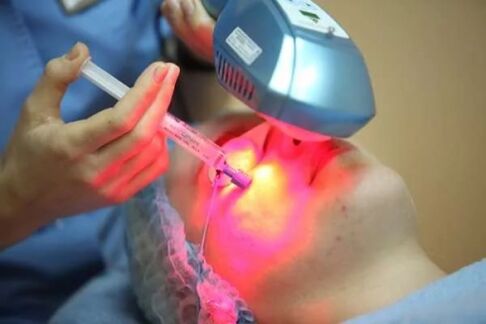
But there are some relative contraindications - most of them are temporary and cosmetologists simply postpone the procedure to another date. These phenomena include:
- Appearance in the affected area of acne, boils.
- Increased body temperature.
- Respiratory infections.
- Fresh tan.
- Hypertensive crisis on the day of the designed manipulation.
- Senggugut.
- Visited chemical (acid) skin in the last 2 weeks. The skin must regrow, otherwise exposure will cause burns.
It is impossible to characterize laser treatment as a harmless procedure. Radiation penetrates into the skin, with the power of energy, destroying old cells, removing areas of defects. If the body suffers from abnormalities, pathologies, and is prone to inadequate response to ultraviolet light, beauticians must be warned.
Side effects of laser exposure
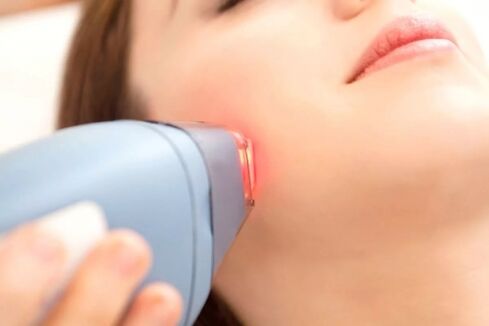
Laser beams are inventions aimed at improving the state of appearance. This procedure is really effective and has had a clear positive effect on many people. But these statistics cannot insure against the possibility of a negative outcome in each subsequent case. The same treatment for some patients can be a real savior from scars, acne and wrinkles, while for others it can cause problems with the body.
All negative results have a cause - it appears due to the illiteracy of the cosmetologist, the characteristics of the patient's immunity, the refusal to care for the surface of the treated skin. Laser radiation can cause the following side effects:
- Burns (when a cosmetologist chooses the parameters of exposure to the laser beam incorrectly).
- Crust formation is common for some types of laser procedures. But the appearance of the crust, which causes pain even with mimicking activity, is pathological.
- Itching due to increased skin sensitivity.
- Redness - usually disappears after 2-3 days, subject to systematic treatment with burns.
- Scars on tissues. The change in texture is the result of incorrect selection of processing parameters.
- Activation of a herpes infection is the body’s immune system response to an irritant.
Also, side effects include edema and the development of suppuration of the treated area. But this happens only in the case of a bacterial infection - when the patient rubs, brushing the polished surface with a laser.
If there are no obstacles to the procedure, laser treatment on the problem skin area will be the best option to solve the problem. In the vast majority, it is a beneficial property of high -precision beams described in the medical literature. Experiencing the psychological discomfort of realizing external inferiority, thanks to the use of lasers, many people have eliminated aesthetic imperfections and become happy.





















